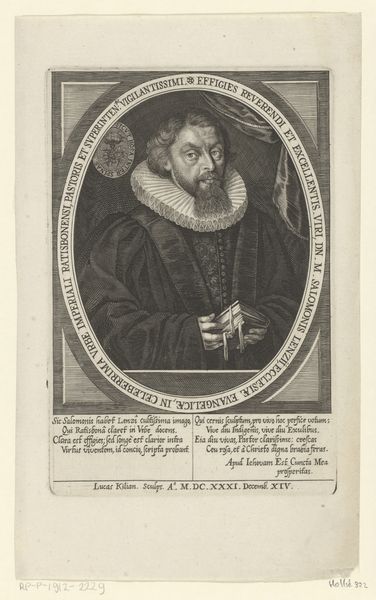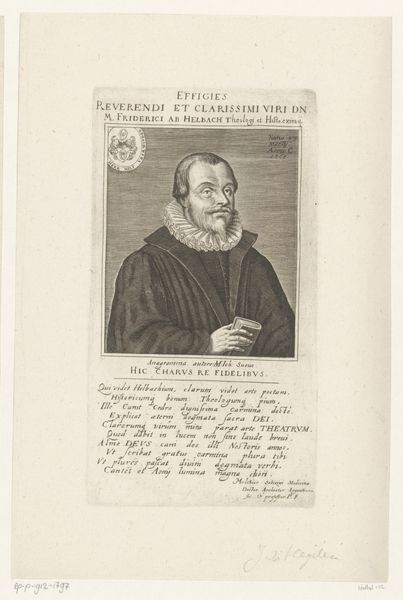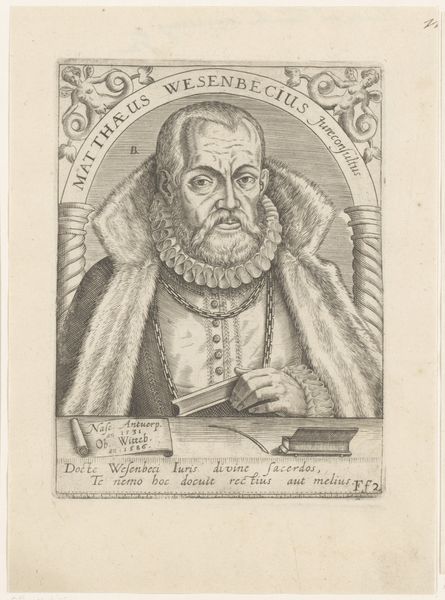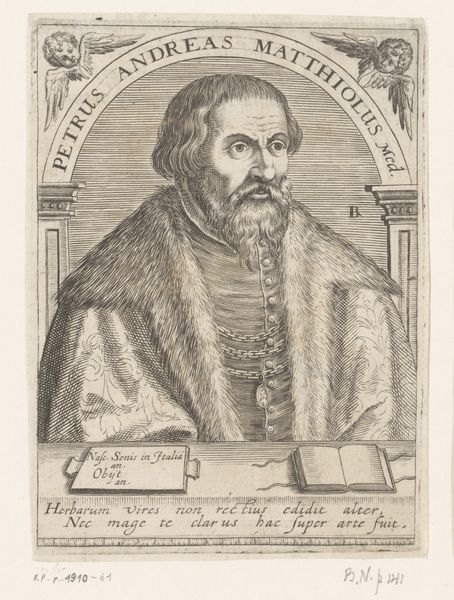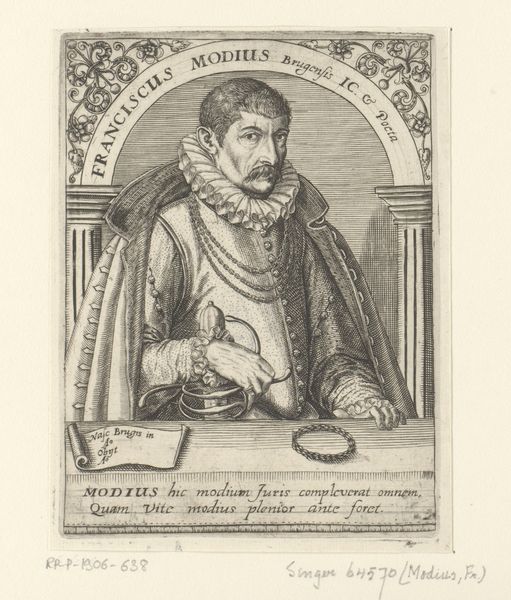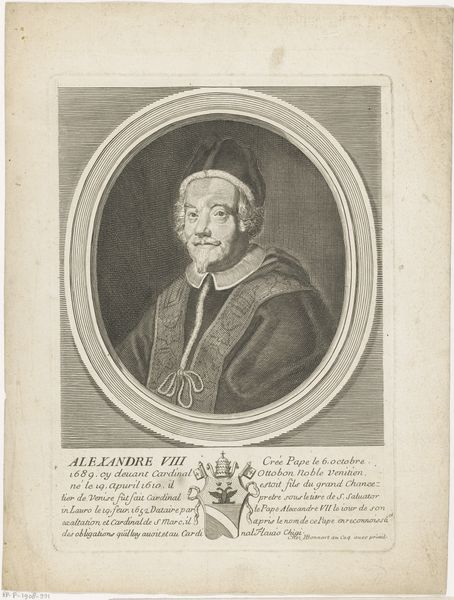
print, engraving
#
portrait
#
baroque
# print
#
old engraving style
#
history-painting
#
engraving
Dimensions: height 187 mm, width 136 mm
Copyright: Rijks Museum: Open Domain
Curator: This is an engraving from 1682, titled "Portret van André Tiraqueau." It’s currently held at the Rijksmuseum. What's your initial take on it? Editor: He looks quite severe. There’s something about the intense gaze, coupled with the very formal attire and fur collar, that conveys authority and perhaps a hint of inflexibility. The textures in the engraving are fascinating. Curator: Indeed. The piece portrays André Tiraqueau, a 16th-century French jurist. Note how the artist, Edme de Boulonois, captured the likeness and also subtly reinforced Tiraqueau’s social standing. Look at the carefully rendered fur. It speaks volumes about the privilege he experienced. Editor: Right, it’s not just about representation, but the construction of an image designed to project power. It makes me think about who got to have their portrait made back then and what those images were meant to communicate about the sitter’s place in society. It's interesting to see all that text right below him. Is it related to Tiraqueau? Curator: Precisely. Engravings like these often served as frontispieces for books or were circulated amongst intellectual circles. Yes, the text details the important intellectual contributions of Tiraqueau, further solidifying his reputation within learned circles. The portrait acts as a visual endorsement. Editor: It’s a carefully crafted statement about intellect and status within a specific power structure. This goes beyond a simple desire to depict his physical features—the rendering makes it clear who was empowered and authorized to lead. Even something as simple as how he holds his book subtly telegraphs his access to the world of knowledge. Curator: I agree entirely. We’re witnessing the intersection of art, politics, and social hierarchy playing out in ink and paper. Editor: Reflecting on it, the artwork encourages contemplation on power dynamics, identity, and historical narrative. Curator: I'd add the reminder that studying these types of historical pieces also helps one to interpret their reverberations into modern institutions, culture and leadership.
Comments
No comments
Be the first to comment and join the conversation on the ultimate creative platform.

